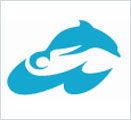Ashok J. Gadgil, Ph.D.

- Title
- Senior Scientist
- Address
-
University of California
Environmental Energy Technologies Division - City, State, ZIP
- Mailstop 90R3058, 1 Cyclotron Road, Berkeley, California 94720-8132
- Country
- USA
- [email protected]
- Award year
- 1991
Research
Project Details
Gadgil's project addressed methods to strengthen energy efficiency implementation in developing countries. He was successful in pursuing three initiatives to meet that end.
Firstly, he accelerated implementation of efficient lighting in the developing world with appropriate policy measures and innovative institutional programs and linkages. This work was done in India, Mexico and Poland. In particular, the project in Mexico attracted more than $20 million in funding from the Global Environment Facility ($10M grant), the Norwegian government ($2M grant) and the World Bank ($10M loan). Based on the achievements in Monterrey and Guadalajara, Mexico, where 5,000 CFLs are sold each week under Gadgil's IlluMex Project, the International Finance Corporation (IFC) implemented the Poland Efficient Lighting Project which saved 621 GWh of electricity in 1995-97 alone. As a result, in early 1997 the IFC proposed a $150M project on efficient lighting spanning ten countries to start in late 1999.
Secondly, Gadgil was instrumental in establishing analysis capabilities in India and Brazil to provide independent reviews of national and regional energy and environmental policies.
Lastly, he utilized Pew funding and additional monies leveraged through the Fellowship to invent UV Waterworks, a solar-powered water disinfection device to aid citizens in developing countries to access clean drinking water. Biologically contaminated water kills approximately 400 children below the age of five every hour in the developing world. Gadgil's invention won the Discover Award for the most significant environmental invention of 1995 and the 1995 Popular Science Award for Best of What's New. In 1998, the device was inaugurated into the permanent collection on the Medical History section of the National Museum of American History, Smithsonian Institution, in Washington DC. The technology is now licensed by the University of California to a small California start-up firm which began production in November 1997.
Biography
Ashok Gadgil's research at the Lawrence Berkeley Laboratory addresses the implementation of energy efficiency in the developing world. His interests include technology, economics and policy analysis of energy-efficiency options to reduce the environmental burden of energy production and end use.
In 1983, Gadgil returned to India for five years to apply his knowledge to the energy problems of his home country. While there, he worked at the Tata Energy Research Institute (TERI), helping them to build capacity by attracting talented staff and funding.
Gadgil also has strong interests in the disinfection of potable water for rural areas in developing countries, carbon credits trading as well as pollutant transport and removal processes in the indoor environment.
MORE INFORMATION
Waterhealth International, Inc.
CV
EDUCATION
Ph.D., University of California
1979: Physics, Berkeley, California, USA
Master of Science, Indian Institute of Technology at Kanpur
1973: Physics, India
Bachelor of Science, University of Bombay
1971: Physics, India
KEY AWARDS & HONORS
World Technology Award for Energy
2002: World Technology Network
UV Waterworks inaugurated into the permanent collection of the Medical History section of the National Museum of American History
1998: Smithsonian Institution
Discover Award for the Most Significant Environmental Invention
1996: Discover Magazine
Best of What's New
1995: Popular Science Award
Marine Fellow
1991: Pew Fellows Program in Conservation and the Environment
ASSOCIATIONS
American Physical Society
Fellow
SELECT PUBLICATIONS
- da Silva, E.P., G.M. Jannuzzi, A. Gadgil and M.L. Leonardi. 1997. Possibilidades do uso de fontes renovaveis de energia em manaus. Revista Brasileira de Energia 6(2): 9--33
- Anjali, M. and A.J. Gadgil. 1996. Bombay efficient lighting large-scale experiment (BELLE):Blueprint for improving energy efficiency and reducing peak electric demand in a developing country. Atmospheric Environment 30(5): 803-808
- Friedmann, R., O. De Buen, J. Sathaye, A. Gadgil, E. Vargas and R. Saucedo. 1995. Assessing the residential lighting efficiency opportunities in Guadalajara and Monterrey, Mexico. Energy 20(2): 151-159
- Gadgil, A.J. and M.A. Sastry. 1994. Stalled on the road to the market: Lessons from a project promoting lighting efficiency in India. Energy Policy 22(2): 151-163
- Sathaye, J., R. Friedmann, S. Meyers, O. De Buen, A. Gadgil, E. Vargas and R. Saucedo. 1994. Economic analysis of Illumex: A project to promote energy-efficient residential lighting in Mexico. Energy Policy 22(2): 163-171
- Sathaye, J. and A.J. Gadgil. 1992. Aggressive cost-effective electricity conservation: Novel approaches. Energy Policy 20(2): 163-172
- Gadgil A.J. and G. Jannuzzi. 1991. Conservation potential of compact fluorescent lamps in India and Brazil. Energy Policy 19(5): 449
- Levine, M.D., A. Gadgil, S. Meyers, J. Sathaye, J. Stafurik and T. Wilbanks. 1991. Energy Efficiency, Developing Nations, and Eastern Europe., Washington D.C. A Report to the U.S. Working Group on Global Energy Efficiency. International Institute for Energy Conservation